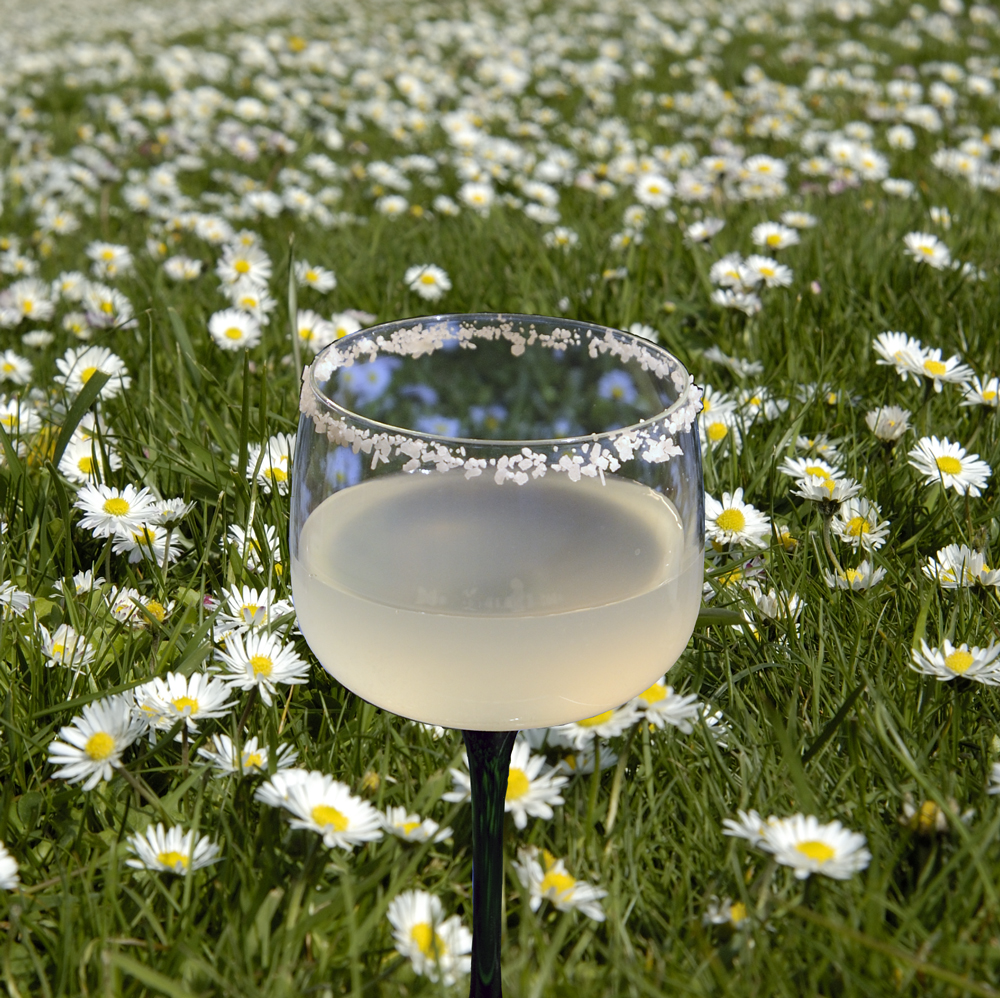
On February 22nd, we celebrate Margarita Day.
This cocktail is undoubtedly one of the world’s favorites and holds the title of the most popular tequila-based cocktail. In fact, Margarita has evolved into an extensive cocktail family with countless variations.
n its original and traditional form, Margarita is a classic Daisy cocktail, which is a cocktail family dating back to the Victorian era. Daisies typically consist of a spirit, a liqueur (usually orange-flavored), and lemon or lime juice. The classic Margarita, for example, comprises tequila, orange liqueur, and lime juice. You could also consider it a type of Sour because Daisies fall under the Sour cocktail family (which generally includes a spirit or liqueur, citrus juice, sweeteners, bitters optionally, and egg white optionally).
The English name “Daisy” (the corruption of “day’s eye”) comes from the flower, and the Spanish name for this flower is “Margarita.” So, it’s quite possible that the cocktail’s name transitioned from the classic English description of Tequila Daisy to Spanish.
The cocktail first appeared in print under the name “Tequila Daisy” in 1936, mentioned by James Graham in the Moville Mail when he described his visit to Tijuana, Mexico. It was in a saloon known as “The home of the famous Tequila Daisy.” This saloon, one of the rare ones in Tijuana that survived the end of the Prohibition era in the United States, was owned by an Irishman named Madden, who was claimed to be the inventor of the Tequila Daisy. Interestingly, he admitted that he initially made the cocktail by mistake, grabbing the wrong spirit bottle. However, the customers loved it, and it became a signature drink.
The ancestor of the Margarita in terms of its recipe is the British cocktail “Picador,” which had the same ingredient proportions as the classic Margarita. It was first published in William James Tarling’s 1937 book “Café Royal Cocktail Book.”
In 1939, Picador appeared in “The World Famous Cotton Club: 1939 Book of Mixed Drinks” by Charlie Connolly, but now under the name “Tequila Sour.” It had gained a new important feature – a salt rim on the glass.
The history of the Margarita’s name and its creators is shrouded in mystery, especially considering that the name “Margarita” was quite popular in those years. Regardless, Margarita quickly gained international acclaim and underwent rapid evolution, giving rise to a vast cocktail family, some members of which bear little resemblance to the classic Margarita.
Margarita can be enjoyed in various ways: straight-up, on the rocks, or blended with crushed ice.
As for the ingredients, the possibilities are almost endless. Margaritas can include a variety of fruits and vegetables, including beet, various herbs and spices, different liqueurs, sweeteners, and more. Tequila is usually a constant, although in some cases, Mezcal, its close relative, is used.
Margaritas can be served in various glassware, including Margarita glasses, cocktail glasses, old-fashioned glasses, wine glasses, champagne flutes, beer pints, and even unconventional containers like guacamole or shrimp cocktail dishes.
When it comes to size, the largest Margarita was created in 2011 for the opening of Margaritaville Casino in Las Vegas. It was a colossal 32,176 liters, a spectacle that required 60 people and around 300 hours to prepare, as documented in the Guinness Records Book. However, the book doesn’t tell us how many people and hours it took to consume!
Personally, I have a fondness for classics, so here’s the classic Margarita recipe according to the International Bartenders Association (IBA):
Ingredients:
-1 2/3 oz / 50 ml Tequila
-1 oz / 20 ml Triple Sec
-1/2 oz / 15 ml Fresh Lime Juice
Decoration – half salt rim.
Process:
Rim a chilled glass with lime juice and sea salt.
Shake all ingredients with ice and strain into a glass.
Drinkware:
Margarita glass
Visit my online store for a unique poster featuring this cocktail, along with many other beautiful cocktails and other wine-related subjects.
It’s the perfect way to add a touch of sophistication to your kitchen or bar. Click here to shop now!